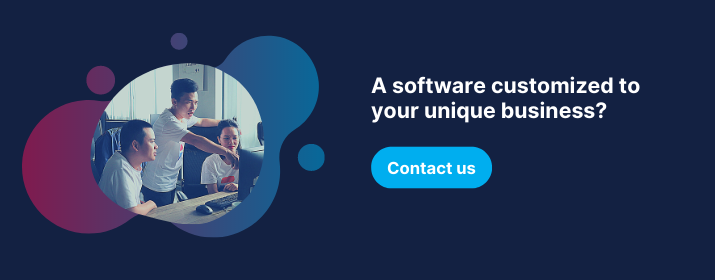In the fast-evolving landscape of the tech industry, offshore software development has emerged as a cornerstone of innovation and growth. As businesses strive to remain competitive, the globalization of software development teams offers a pathway to harnessing diverse talents, fostering creativity, and achieving cost efficiencies. Yet, the bridge between conceptualization and successful execution is paved with communication challenges. The nuances of cross-cultural interactions, the hurdles of navigating time zones, and the barriers posed by language differences can significantly impede progress. Recognizing and overcoming these challenges is paramount to leveraging the full potential of offshore software development.
Understanding the Foundations
The Basics of Offshore Software Development
The concept of offshore software development is not new but has gained momentum in the digital age. By extending operations beyond national borders, companies tap into a global pool of talent, accessing skills and expertise that may be scarce or cost-prohibitive at home. This model is particularly attractive for startups and established firms alike, offering cost savings. However, the path is fraught with challenges. Cultural differences, communication barriers, and logistical complexities can derail projects if not properly managed.
Moreover, the 2022 Global Outsourcing Survey by Deloitte indicates that the competition for talent has intensified, leading to evolving third-party models that enhance business and IT processes with Artificial intelligence(AI) and data insights. This evolution in outsourcing demands a strategic approach to managing offshore teams, emphasizing the importance of innovation and competitiveness in a global market.
Identifying Communication Barriers
Effective communication forms the backbone of any successful project. In offshore setups, the physical distance is compounded by cultural gaps and language barriers. Recognizing these barriers is the first step towards mitigating their impact on project success.
Setting the Stage for Effective Communication
Selecting the Right Communication Tools
The digital era offers a plethora of tools designed to bridge the communication gap. Slack, Microsoft Teams, and Zoom have become staples for real-time collaboration, each offering unique features tailored to different project needs. Complementing these with project management software like JIRA, Trello, or Asana can streamline task allocation and progress tracking, fostering a seamless workflow. The key lies in selecting tools that align with the team's operational dynamics and project requirements, ensuring everyone is connected, irrespective of geographical boundaries.
Selecting the most suitable collaboration tool requires a thorough understanding of your team's and project's unique requirements. For teams deeply embedded in the Microsoft ecosystem, Microsoft Teams provides a cohesive experience. Conversely, Slack is ideal for teams favoring a chat-based interface with extensive app integration capabilities. For those prioritizing video conferencing, Zoom's advanced features offer an unparalleled virtual meeting experience.
The true value of these collaboration tools lies in their ability to fit seamlessly into your team's established processes and fulfill specific project needs. Employing a mix of these platforms can maximize their benefits, addressing any potential shortcomings and amplifying overall productivity.
Establishing Communication Protocols
Clear communication protocols serve as the blueprint for interaction within the team. Establishing regular check-ins, defining escalation paths, and setting clear expectations for response times are fundamental to maintaining project momentum.
According to McKinsey, effective communication within teams encompasses more than just how often they interact; it also includes the strategic assembly of the team and the nature of their interactions. Teams with fewer than six members may suffer from a lack of diversity and bandwidth, leading to poorer decisions and slower decision-making processes. Conversely, teams larger than ten members tend to form sub-groups, which can result in divisive behavior and undermine ownership of group decisions. Therefore, maintaining an optimal team size, along with fostering a culture of alignment on direction, high-quality interaction, and a strong sense of renewal, is essential for achieving great teamwork.

Cultivating a Productive Relationship
Building Trust and Rapport
According to Psychology Today, Virtual environments present unique challenges to building trust due to the lack of non-verbal cues and the potential for inaccurate assumptions. Structuring communication norms and creating opportunities for social exchange can help overcome these challenges. Promoting early social exchange, creating non-work discussion opportunities, emphasizing personal characteristics like honesty and openness, and adding more structure to team interactions are effective ways to increase team trust in virtual settings.
Trust is the cornerstone of any high-performing team. For offshore teams, fostering a sense of belonging and mutual respect is vital. Engaging in virtual team-building activities, celebrating milestones, and encouraging informal interactions can strengthen bonds, fostering a collaborative environment. Transparent communication builds trust and empowers team members, fostering an environment conducive to innovation and problem-solving.
Managing Cultural Diversity
Managing cultural differences in offshore software development teams is crucial for fostering healthy relationships and effective communication. Culture influences teams through communication styles, language diversity, time management orientation, and religious beliefs.
Strategies for managing these differences include building a culture of respect and inclusion, scheduling team-building activities, establishing clear communication guidelines, adapting leadership styles, and utilizing technology for cultural integration. These approaches help transform cultural diversity from a potential obstacle into a strategic advantage, enhancing team dynamics and project outcomes.
Ensuring Clarity and Understanding
In the virtual workspace, clarity is paramount. Detailed project documentation, clear task assignments, and concise communication can eliminate ambiguities, ensuring everyone is aligned with project goals. Leveraging tools for effective virtual meetings, such as shared agendas and meeting minutes, can further enhance understanding and ensure all team members are on the same page.
Enhancing Communication Effectiveness
Leveraging Time Zone Differences
Time zone differences often seen as a challenge, can be turned into an advantage with careful planning. Scheduling overlapping hours for real-time collaboration and establishing clear expectations for asynchronous work can maximize productivity. This approach ensures that the project progresses around the clock:
- Schedule Overlapping Hours: Identify hours that are convenient for both teams and schedule overlapping hours for real-time collaboration. This is essential for meetings, brainstorming sessions, and addressing urgent issues.
- Maximize Asynchronous Work: For hours when teams are not working simultaneously, establish clear expectations for asynchronous work. Use this time for tasks that require deep focus or for preparing materials that can be reviewed by the other team during their working hours.
- Use a "Follow the Sun" Model: This approach involves passing work from one time zone to another to ensure that the project is continuously moving forward. It requires careful planning and coordination but can significantly accelerate development timelines.
- Set Clear Deadlines and Expectations: When assigning tasks, consider the time zone differences and set realistic deadlines. Clear expectations about work hours, availability, and turnaround times for tasks should be communicated to avoid confusion and delays.
- Invest in Quality Handovers: Ensure that the team members at the end of one time zone prepare detailed handovers for their counterparts in the next time zone. This should include completed tasks, pending items, and any issues that need attention.
By implementing these strategies, an effective communication framework with offshore software development teams can be built, allowing for the advantageous use of time zone differences. This approach ultimately fosters more productive and successful project outcomes.
Adopting Agile Communication Practices
Agile methodologies, with their emphasis on flexibility, collaboration, and iterative progress, can greatly enhance communication in offshore setups. Implementing regular stand-ups, sprint planning sessions, and retrospectives keeps the team aligned and responsive to project changes. This adaptive approach fosters a dynamic environment where feedback is continuously integrated, driving project momentum.
Read Also:
- How to write an RFP for software development (with template and example)
- How to write a practical “Agile” software product specification for startups
Utilizing Visual and Interactive Tools
The adage "a picture is worth a thousand words" holds particularly true in remote communication. Visual aids such as screen sharing, video calls, and interactive whiteboards can bridge the communication gap, making complex ideas easier to convey and understand. These tools facilitate a more engaging and productive exchange of ideas, enhancing collaboration and problem-solving.
Visual Communication Tools:
- Slack: Acts as a virtual office, organizing team conversations into channels, supporting file sharing, and integrating with services like Google Drive and GitHub. It's pivotal for transparent and efficient project communication.
- Google Meet: Offers free screen sharing and video conferencing, ideal for daily stand-up meetings and progress updates, ensuring face-to-face communication despite geographical distances.
- Trello: A board-based task management tool that simplifies the visualization of tasks' progress, allowing easy tracking and planning, essential for keeping offshore teams aligned on project objectives.
- GitHub: Facilitates code sharing and transparency, allowing clients and team members to track development progress in real-time, promoting a culture of openness.

Advanced Strategies for Long-Term Success
Continuous Improvement and Feedback Loops
The concept of continuous improvement, borrowed from the Agile methodology, plays a crucial role in enhancing communication with offshore teams. By establishing mechanisms for regular feedback, teams can identify areas of misunderstanding or misalignment quickly and address them proactively. This could be in the form of weekly review meetings, regular performance surveys, or open forums for team members to voice concerns and suggestions.
A feedback loop encourages a culture of openness and trust, where constructive criticism is valued over blame. This environment not only improves the efficiency and effectiveness of communication but also fosters a culture of innovation and continuous learning.
Navigating Challenges and Conflicts
Conflict is an inevitable aspect of any collaborative endeavor. Developing effective conflict resolution strategies and maintaining a focus on positive outcomes can help navigate through disagreements and challenges. Prioritizing open dialogue and mutual respect ensures that conflicts become opportunities for growth and learning, rather than obstacles to success.
Measuring and Enhancing Team Performance
Implementing key performance indicators (KPIs) specific to remote teams provides a framework for measuring effectiveness and identifying areas for improvement. Tools that facilitate real-time monitoring and feedback can help managers and team members stay aligned with project objectives, ensuring that performance is continuously optimized.
Several vital KPIs and performance metrics have been identified as instrumental in managing offshore software development teams:
- Sprint and Release Burnout: These metrics evaluate the actual amount of work done within a sprint or iteration and quantify release progress, respectively. They help in managing product releases and in assessing whether the team is ahead, on time, or lagging in their schedules.
- Cycle Time and Code Coverage: Cycle time measures the duration spent on specific tasks, aiding in gauging the efficiency of the development process, while code coverage assesses the quality of testing by determining how much of the source code executes during the testing process.
- Operational Metrics: These include Mean Time Between Failures (MTBF) and Mean Time to Recover (MTTR), which analyze the software's stability in production and the efficacy of maintenance activities.
- Customer Satisfaction Metrics: Metrics such as Net Promoter Score (NPS), Customer Satisfaction Score (CSAT), and Customer Effort Score (CES) demonstrate the success of customer interaction with the software and their overall satisfaction with the product.
- Delivery Benchmarks and Project Scope Management: Ensuring that deliverables are in line with the project scope and that there are no delays in delivery is crucial for maintaining client trust and for the efficient management of the project scope.
- The Project Management Approach: Using project management software and regular online meetings facilitates seamless management and communication with your offshore remote team. It's also essential to address any cultural differences that might affect communication.
- Feedback Resolution: Effective management of feedback and resolution of bugs or issues without extra costs signifies the professionalism and expertise of your offshore development team.
Conclusion
Building effective communication with your offshore software development team is a journey marked by continuous learning and adaptation. It requires a commitment to openness, flexibility, and mutual respect. The strategies outlined in this article provide a foundation for cultivating a productive and collaborative environment, enabling teams to harness the full potential of offshore software development.
Fostering a culture of open communication and mutual respect enhances project success and creates an environment ripe for innovation and collaboration. The impact of effective communication on project outcomes is profound; It is the glue that binds together the diverse elements of offshore software development, turning challenges into opportunities for growth and success.
References:
Global outsourcing survey 2022 - Deloitte
Slack vs. Teams: Which should your business use? - zapier
High-performing teams: A timeless leadership topic - Mckinsey & Company
What is the follow-the-sun model? Advantages + strategy - Zendesk
Why the Key to Virtual Team Effectiveness Is Team Trust - Psychology Today





